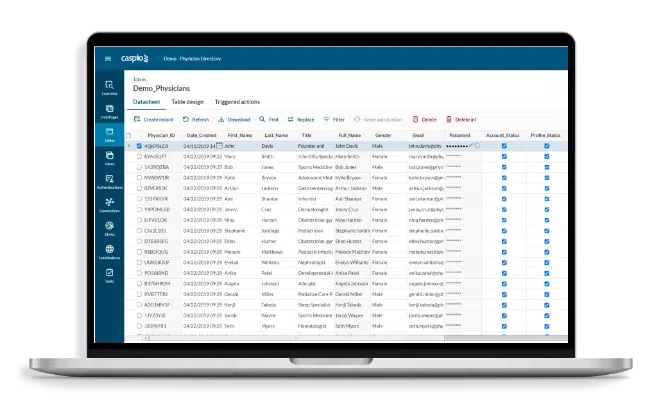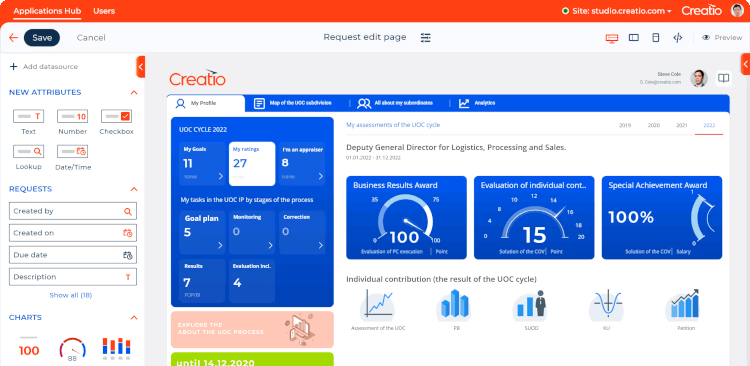No-Code Open Platform Data Source Creation: Streamline Complicated Growth Jobs
No-Code Open Platform Data Source Creation: Streamline Complicated Growth Jobs
Blog Article
Exploring the Advantages of Scalable Data Sources That Call For No Coding Skills for Efficient Data Monitoring Solutions
The development of scalable data sources that get rid of the requirement for coding abilities presents a transformative opportunity for companies seeking reliable information monitoring options. By making it possible for non-technical individuals to harness the power of data through user-friendly interfaces, these systems boost ease of access and foster cooperation throughout diverse teams. Additionally, their cost-effectiveness and adaptability to advancing organization requirements can significantly improve operational procedures. As we think about the effects of such advancements, it ends up being crucial to analyze how they can improve the landscape of information administration and drive sustainable growth in an affordable atmosphere.
Enhanced Access for Individuals
Boosted accessibility for individuals is a crucial aspect of scalable data sources, making sure that data administration systems are user-friendly and instinctive. In an age where data-driven choices are extremely important, availability allows a wider variety of users, consisting of those without considerable technological know-how, to involve with data source systems successfully. This democratization of data accessibility assists in improved cooperation throughout divisions, empowering employees to make and extract insights notified decisions.
User-friendly interfaces, such as drag-and-drop functions and aesthetic information representation, simplify complex data interactions. These enhancements lower the knowing curve related to conventional database management, allowing individuals to concentrate on leveraging information instead of grappling with technical intricacies. In addition, scalable databases frequently include customizable dashboards and real-time analytics, supplying customers with immediate insights tailored to their specific demands.
Cost-Effectiveness and Resource Cost Savings
Efficient information monitoring not just rests on access however likewise on cost-effectiveness and resource cost savings. Scalable databases developed for customers without coding skills considerably reduce economic burdens typically related to conventional database administration systems. By eliminating the demand for specialized programs expertise, companies can allocate their sources extra effectively, focusing funds on core company activities instead of comprehensive training or working with skilled employees.
Furthermore, these databases usually make use of cloud-based remedies, which further decrease prices associated with hardware and maintenance. Organizations can scale their database services according to their demands, avoiding the costs incurred from over-provisioning sources. This flexibility implies organizations can adapt to transforming demands without sustaining unnecessary prices, bring about considerable long-term savings.
Furthermore, easy to use interfaces streamline information entry and monitoring processes, decreasing the time invested in administrative tasks. This efficiency equates right into labor price savings, allowing teams to concentrate on calculated campaigns instead of routine maintenance. Overall, adopting scalable data sources that call for no coding abilities cultivates a more affordable technique to information management, making it possible for companies to optimize their sources while maintaining high degrees of functional performance.
Improved Partnership Across Teams

Furthermore, scalable data sources facilitate smooth interaction among employee. With easy to use user interfaces that need no coding skills, workers can conveniently create, customize, and share records or control panels tailored to their details requirements. This democratization of information equips non-technical users to contribute insights, improving the collaborative setting.
In addition, these data sources sustain concurrent access, allowing numerous individuals to work with the exact same dataset concurrently. This attribute boosts performance, as groups can involve in joint data evaluation without the threat of version control issues. The ability to leave remarks or notes directly within the data source further promotes dialogue and makes clear information analyses.
Streamlined Information Administration Processes
In today's data-driven atmosphere, organizations identify the necessity of streamlined information monitoring refines to make best use of efficiency and accuracy. By leveraging scalable data sources that call for no coding abilities, businesses can simplify their information handling and reduce the complexities normally connected with traditional data source systems. This accessibility empowers non-technical individuals to involve directly with information, assisting in quicker decision-making and minimizing reliance on specialized IT workers.
Structured information administration processes improve process by automating routine tasks such as information entry, validation, and coverage. Automated information combination guarantees that details from different sources is accumulated seamlessly, More about the author removing silos and promoting a linked view of crucial service metrics (no-code). Furthermore, user-friendly user interfaces permit workers to control data quickly, allowing them to create understandings that drive strategic campaigns without the requirement for comprehensive training.
This effectiveness not just accelerates operational processes however also lessens the potential for human error, ensuring that information stays precise and trustworthy. Ultimately, streamlined information monitoring procedures with scalable databases result in improved performance, permitting companies to focus on core tasks while making certain that their data management practices are efficient and effective.
Scalability for Growing Organizations

For broadening business, the capability to scale up or down is important. A scalable database can manage an increase of information created from new consumers, items, or services, making certain that organization operations continue to be uninterrupted. Moreover, these databases provide the capability to manage peak lots efficiently, which is essential during periods of quick growth or seasonal spikes.
Additionally, many scalable data source remedies are created with easy to use interfaces that require no coding abilities, encouraging non-technical team to handle information effectively (no-code). This democratization of information monitoring enables companies to designate sources strategically and minimize reliance on specialized IT personnel
Ultimately, taking on a scalable database not only improves functional performance but likewise cultivates a setting where companies can introduce and advance without the restrictions of traditional database systems. This adaptability positions companies for long-term success in today's affordable landscape.
Final Thought
In final thought, scalable data sources that call for no coding abilities provide substantial benefits for reliable information management. By enhancing information management procedures and offering scalability for growing companies, such solutions make it possible for companies to adapt to transforming demands effectively.
Improved availability for customers is an essential element of scalable databases, ensuring that information administration systems are intuitive and easy to use.User-friendly interfaces, such as drag-and-drop my explanation attributes and visual information representation, streamline complex information interactions. Overall, adopting scalable data sources that require no coding abilities cultivates a much more affordable technique to data monitoring, making it possible for organizations to maximize their resources while preserving high degrees of operational performance.
By leveraging scalable data sources that require no coding skills, organizations can simplify their data handling and minimize the intricacies typically associated with traditional data source systems - no-code.Structured information monitoring processes enhance process by automating regular tasks such as information entrance, recognition, and reporting
Report this page